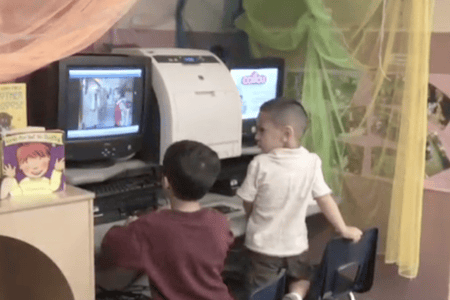
When I am not on the road training teachers, researchers, and coaches on the CLASS tool, you can often find me in the home office. There, I'm busy writing blog posts (like this one!), learning new age levels (did you know we have an observation tool for each age group from Infants through Secondary?), and fielding questions and concerns from the Reliability Support helpline. A few weeks ago a question came through the Reliability Support queue that made me stop and think. After answering it, I realized that there are probably other observers out there who are struggling with this same question, or one similar. So here is the question and my thoughts on it.
“The Kindergarten children I observed this week were in the computer lab for one interval. They each had headphones, listening to their interactive literacy games. Does that count as Language Modeling?”
It can be tempting to try and find a "place" in the K-3 CLASS tool to put an activity like independent literacy-based computer games. Because, in this case, the students were engaging in an enriching game, versus just playing--so it must be of some value! However, a few critical characteristics of the Language Modeling dimension are missing in the scenario.
The CLASS manual describes Language Modeling as "the teachers' use of language stimulation or language facilitation techniques." This definition is helpful, but let's dig even deeper, right to the indicators.
Our first stop is frequent conversations. These are conversations between teacher and student, or student to student. The literacy game is lacking in these face-to-face human interactions.
Other indicators, such as repeating students' words and phrases, and engaging in self- and parallel talk (mapping actions with words) require intentionality on the teacher's part, and are also likely to be missing in a literacy-based game, even an interactive one!
And finally, the advanced language indicator considers whether the teacher is introducing new vocabulary. The game may be, but CLASS is asking us to measure those human, face-to-face interactions in the classroom. So, if the teacher isn't actively stimulating and facilitating language, but rather passively watching or monitoring a listening activity, and children have few opportunities to use language, then this scenario is an example of low range Language Modeling.
- Has this or something similar ever happened to you when observing?
- How did you handle it?
- Have you had a question like this come up in observation or MMCI trainings?
- What other questions does this scenario make you think of?
I am looking forward to reading your thoughts and comments on this topic. I am sure with the increased use of technology in the classroom, we will have to think more about these kinds of questions and the role computers and technology play in the lives of young children. While we do so, let’s all agree to keep one thing in mind: Interactions Matter.
Keep those questions coming!
Carmen C. Virginia
Have CLASS, will travel
